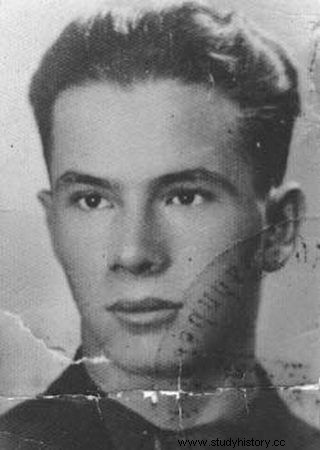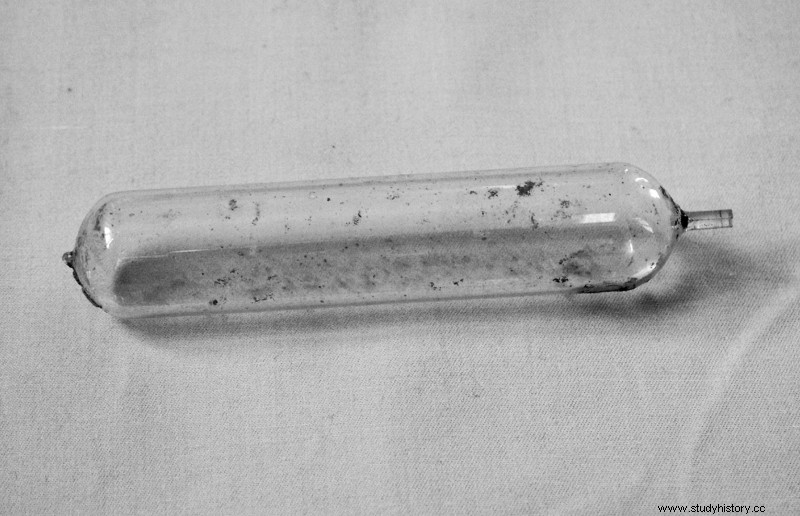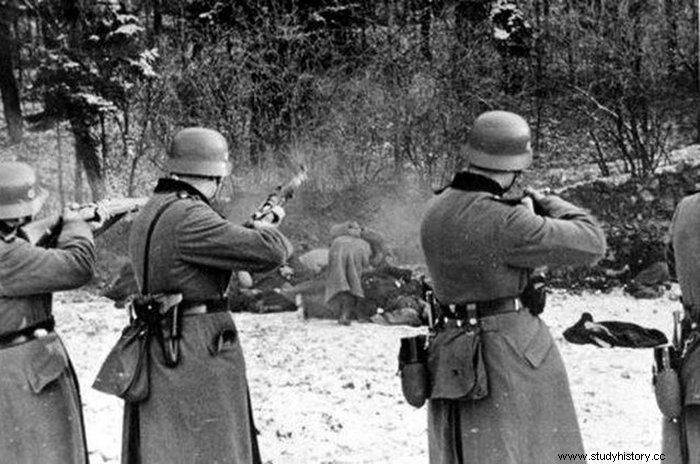Meat in canteens seasoned with uranium salts and anthrax, poisonous cosmetics or "Nur für Deutsche" rail cars contaminated with deadly germs. This is only part of the arsenal of unconventional means used in biological warfare that the commander of the Home Army declared against Germany.
We can find out that these were commonly used and deadly effective methods by reading the testimony of Stanisław Janusz Sosabowski "Stasinek" (son of General Sosabowski), written by Dariusz Baliszewski in the first half of the 1990s.
The man who killed 700 Germans
During the conversation, the former commander of the Kedyw AK Kedyw company "A", who had medical education, admitted that he caused 500 to 700 Germans to lose their lives! They all fell victim to biological and chemical weapons. As explained many years later, nearly 80-year-old Sosabowski:
It was called "special material", and it flew in from England with every Cochlear. Specially protected ampoules with uranium acetone [probably it is uranium acetate (acetate) - RK]. One month after “ingestion”, nephritis appeared, for which there was no rescue. Or ampoules with mustard gas, i.e. liquid mustard gas. Sooner or later, depending on the concentration, it showed symptoms of typhus and inevitable death.

Stanisław Janusz Sosabowski in a photo from his scout days (source:public domain).
Antrax, or pulmonary anthrax, was added to meat in German mass caterers. Some ampoules were given to restaurateurs or our sworn waiters at "» Nur für Deutsche ", other hairdressers cooperating with us in hotels for Germans only, and apparently, as I heard, sometimes also our beauticians in German beauty salons.
Mobile for very special tasks
All of this was part of a well-thought-out and carefully planned action carried out almost from the very beginning of the war. As early as March 1940, the commander of the Union of Armed Struggle in the territory occupied by the Germans, Col. Stefan Rowecki "Rakoń", wrote in one of his reports to General Kazimierz Sosnkowski that a special cell was established for chemical activities -technical and bacteriological .
Its members dealt with the theoretical issues of the use of biological and chemical weapons, and above all - with the production of appropriate preparations on the spot. "Rakoń" reported to his superior:
I intend to use them in the first place to destroy material and equipment, and in the second - to infect people without threatening our population, and even by transferring them to the territory of the proper Reich with the help of deported workers.

Probably this type of vial was among the "special materials" that were sent to occupied Poland from London. Photo from the "Great Book of the Home Army" (Znak Horyzont 2015).
The fact that these plans have been implemented is confirmed by subsequent reports in which informed about the use of typhus, dysentery, glanders, anthrax and rabies in the fight against the occupant. These measures were applied both against the Wehrmacht and the civilian population in the Reich.
Typhus and dysentery in the Germans
For example, in a report concerning acts of sabotage committed by the Union of Retaliation established in the spring of 1940, promoted to General Rowecki, reported that in the period from April 1 to August 1, 1941: 92 people from bacteria. Glanders were used in 143 different military units, and typhus and dysentery in 178 cases - during the concentration in the east .

Krakow tram number 8, "Nur für Deutsche". It was in places intended "only for the Germans" that the Home Army used the means of mass destruction (source:public domain).
In turn, the report dated July 31, 1942 reads: Poison was used in 194 accidents, 7 passenger cars were contaminated . The action was coordinated and carried out on a large scale, which is best evidenced by the fact that only in the Opole region, as many as 20,000 horses, previously stolen by the Germans in occupied Poland, were to be infected with glanders.
As for the General Government, as Gen. Rowecki reported to London, until March 1941, as a result of the use of biological-toxic agents, there were 1784 cases of sickness and 149 deaths among the occupiers . At the same time, "Rakoń" emphasized that Establishing the number of accidents is difficult due to the fact that the Germans concealed them and it was difficult to control them. In the event of an illness, the Germans isolate the sick .
No holds barred
The command of the Polish underground was aware, however, that biological warfare could not bring decisive success. General Rowecki himself understood that it would never be possible to cause a real epidemic in Germany, it was more about the psychological aspect, which he emphasized when he wrote: Bacteria will only give their moral effect .
It was quite different with chemical weapons. Here, "Rakoń" saw a lot of room to show off, asking London to send uranium salts (acetate, uranium nitrate) in large amounts, ie approx. 150 kg .
And if you believe what "Stasinek" told Dariusz Baliszewski, this order was systematically implemented, and the sent "special materials" were used for their deadly purpose.
But how are biological weapons?
Despite a number of known actions and mentions in sources, at the present stage it is difficult to unequivocally assess what damage the Germans were actually inflicted with by means of mass destruction. One thing is for sure. In the face of Nazi terror, the Home Army did not hesitate to resort to even the most insidious and deadly means.

In the face of the almost unimaginable scale of the German terror, the Home Army used all available means in the fight against the occupant (source:public domain).
Someone may say that it was at odds with the ethos of the Polish Underground State. However, we must remember that it was the Germans who attacked Poland, and their rule in the occupied territory was characterized by unprecedented brutality.
Therefore, it should not be surprising that the Union for Armed Struggle, and later the Home Army, used all available methods to repay the invader for the crimes he committed in our country.
Sources:
This article is an excerpt from a chapter that I wrote for "Wielka Księga Armii Krajowej" . You will also find texts by other journalists of "Curiosities of History". Find out more by clicking HERE .
